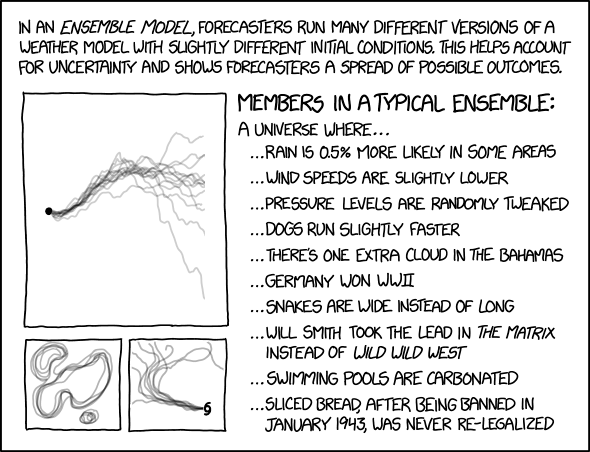Starting January 18, 1943—the midst of World War II—sliced bread was barred from American bakeries and homes. New baking regulations set by the Office of Price Administration had boosted flour prices, and the government wanted to prevent these costs from getting passed down to the consumer. By banning the use of expensive bread-slicing machines, the government was hoping bakeries could keep their prices low. Officials were also worried about the country’s supply of wax paper—and sliced bread required twice as much paraffin wrapping as an unsliced loaf. (It prevented the slices from drying prematurely.)
I would love to see a return of wax paper instead of plastic bags.
Wax paper is great! What I think is so funny about this is that to me wax paper feels more premium. I guess it’s because it’s because plastic is so ubiquitous that despite being an incredible and versatile material, it’s also ridiculously mundane.
Your local neighborhood bakery almost certainly still uses wax paper instead of bags. I don’t eat much bread these days, but when I do I always just walk down to the bakery and pick out a loaf. It’s a million times better than the sugary stuff full of preservatives at the grocery store.
Would it be actual wax paper? These days it could just as likely be coated with plastic rather than wax, as the plastic coatings do the same thing and are cheaper.
I’ve just spent a while searching and can’t find any reliable way to tell whether paper is wax coated, oil coated, plastic coated, or silicone coated.
Wax paper tastes different
And reacts differently to abrasion, high heat, etc.
The silicone-coated stuff is generally called parchment paper. I’ve never seen plastic or oil-coated paper sold as wax paper.
Fun fact- traditional parchment paper is soaked in sulfuric acid
Yeah, I always rip off a piece of the paper and give it a munch before buying the bread to make sure its made with actual wax instead of plastic
You should! It’s probably not bad for you. It hasn’t killed me yet anyway.
I wish I had a local bakery like that. We have a few pastry shops, but unsweet bread is harder to come by.
Same, we have grocery store bakeries, a pie place, a cupcakes, and one French guy who is only open on the weekends
What do you do if you need a French guy on weekdays?
Go look in the pond
Local bakery is great but definitely uses plastic containers and bags
My local bakeries use paper bags. But they also don’t sell sliced bread.
Wax paper isn’t recyclable and putting paraffin in landfills isn’t great. Regular brown paper in a freshly made local bakery is quite fine, though.
Did it work?
No. Homemakers objected, exceptions were passed, and then the ban was rescinded about a month later.
So if your bakery already had the bread slicing machine then you were still good? Except not being allowed to use wax paper of course.
By banning the use of expensive bread-slicing machines,
So they didn’t actually try banning sliced bread.

I learnt from xkcd :-)
Haha same. I didn’t believe it and found the article
Snakes are wide instead of long lol imagine
In the UK, bakers were forbidden from selling bread on the day it was baked, in order to make it more stale and reduce demand.
“During WW1” is the context for this
And WWII.
And WWIII??
Is this a Douglas Adams bit?
Sadly, no:
Bakers, bakeries and bakers shops were required by law only to sell their ‘national loaves’ when they were a day old because stale bread did not cut to waste like fresh bread. Source
[If you can find it, the BBC Timeshift episode ‘Bread: A Loaf Affair’ mentions this along with a surprisingly interesting modern-ish history of bread in the UK. It’s narrated by Tom Baker.]
Wtf does cut to waste mean?
Thick instead of thin?
I have actually been googling the hell out of this and I still don’t know.
Bing AI gave me this: "The phrase “did not cut to waste” in the context of bread rationing during wartime refers to the idea that stale bread, being firmer and less crumbly than fresh bread, could be sliced more thinly and evenly without falling apart or producing excess crumbs. "
Perhaps it means when you cut it, it doesn’t mold as fast?
According to the Oxford English Dictionary, it means to cut in a wasteful manner, particularly in terms of fabric. From elsewhere, it looks like it’s also used in construction in regards to cutting material such that the remaining sections are not usable for other purposes.
However, I’m not sure how stale bread discourages such cuts.
Fresh bread tastes amazing. You overconsume by eating it by itself.
Stale bread tastes… stale. You actually cut thin slices so you can top it with stuff that masks it.
I see where he got his sense of humour at least. I’ll try to find that, thanks.
Thank you! Learned something.
Here is an alternative Piped link(s):
Sliced bread, humanity’s downfall
Piped is a privacy-respecting open-source alternative frontend to YouTube.
I’m open-source; check me out at GitHub.








